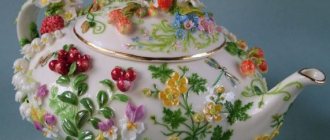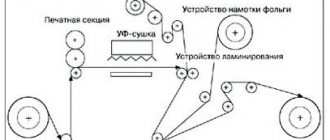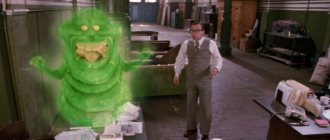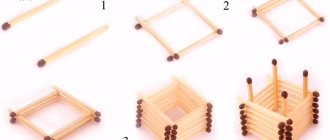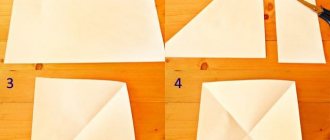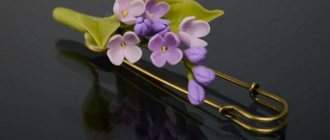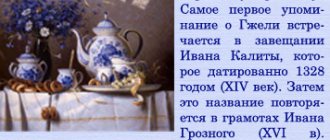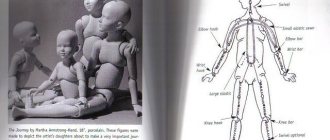Needlework
07/03/2018 Anastasia Prozheva
Today, cold porcelain is one of the most popular materials used in modeling. It is very convenient to use, products made from it turn out beautiful, but the problem is! – getting it can be problematic, especially if the needlewoman lives in a small town. Not every store sells porcelain. But few people know that making this material yourself is quite simple, since the ingredients are available and the process itself is easy and understandable. In this master class you will learn how to make cold porcelain with your own hands.
Materials needed
Baking soda - the most common one, which is sold in any store, will do.
Glycerin and petroleum jelly - you can buy them at the pharmacy.
Corn starch.
Corn is a must! It is this that gives porcelain its snow-white color; potato starch will color the mass gray.
PVA glue - thanks to it the mass hardens.
Citric acid – serves as a preservative for cold porcelain.
Wallpaper glue KMC
The shavings are quite large. In stores there is finer CMC, in powder or small granules. This is the one that needs to be chosen. And these shavings dissolve very poorly in PVA glue.
Paraffin. Some craftswomen add paraffin or stearin (grated candle) to their cold porcelain. So I decided to add paraffin.
It gives smoothness and a little plasticity to the mass. After drying, it becomes a little shiny, and this makes it visually similar to store-bought clay. Stearin (stearic acid) has better properties than paraffin. Paraffin is smaller, stearin is more viscous. To compare them experimentally, you need to find a stearin candle (it’s white). Paraffin ones are available in every store. I didn’t compare them, since I didn’t find stearin suppositories, so I can’t add anything to what was said yet.
By the way, stearic acid can be bought in stores that sell everything for home cosmetics.
Cooking process
The no-cook recipe is quite simple. Take a deep container in which you will mix all the elements. Pour 2 tablespoons of starch and 1 tablespoon of Vaseline into it. Mix the resulting mixture thoroughly and add a quarter teaspoon of soda and a few drops of glycerin. Continue stirring the ingredients. Next comes the final stage - adding glue. PVA will hold the mass together, so you should mix it carefully. Unfortunately, it is difficult to say exactly how much glue is required; here you need to use your eye. After this, knead the mass with your hands. As a result, you should end up with a lump of cold porcelain.
To prevent the mixture from sticking to your hands, lubricate them with cream. This will not only help you form the mixture comfortably, but will also protect your hands from possible irritation.
If you went a little overboard with the glue and the mass is too sticky, add a little dishwashing liquid to it. This will reduce the excessive stickiness of the cold porcelain.
If you want to make the mass colored, then during the final stirring you can add paint: acrylic, oil or food paint (in the photo you can see how porcelain is painted). Stir the mixture thoroughly until the porcelain is evenly colored.
Related article: Swans made from mastic step by step with master class and video
Do not allow water to enter during the preparation process, as the glue already contains it. Excess water will cause the product to quickly become moldy.
Advantages and disadvantages of the recipe
This recipe has some undeniable advantages. Cold porcelain without cooking is very easy to prepare and is difficult to spoil. Boiled porcelain or cooked in the microwave is easy to overheat. If you thoroughly mixed the mixture during the process and the quality of the products used is high, you will get beautiful cold porcelain from which you can make wonderful crafts. But there is also a significant drawback: material prepared in this way deteriorates very quickly. In just three weeks it will begin to dry out and crack or become moldy.
RECIPE Cold Porcelain WITHOUT COOKING.
Wednesday, February 13, 2013 1:01 pm (link) Cited 50 times+ in quote book
I personally have been using the HF recipe without cooking since my very first steps. I studied hard, it turned out differently. It all started with a video on an Italian website. The girl showed everything in detail. I liked it - my crafts turned out better and more decent in appearance. I can’t say exactly why -maybe the quality of the ingredients is appropriate. I used exactly what is indicated in the photo. That’s why I was interested in this MK. Starch, soda (in the store), liquid petroleum jelly, glycerin (in the pharmacy), PVA glue (OBI, building store) - Italian! About the glue, I’ll add: there’s a red stripe on the can, there’s the same one, but with a blue stripe, it’s worse. I don’t know why. I’m writing this only so that you try it and not be disappointed with the result, because... used OTHER products and materials. But what if it works out? You will be pleasantly surprised!
Author MK: girasole2161
I suggest preparing cold porcelain without heat treatment. COLD, SO COLD!!!
Don't worry, it won't take more than 10 minutes...
Take 2 tablespoons of corn starch./don’t pay attention to the labels on the packages…/
Add 1 spoon of Vaseline oil, but you can also use Johnson's Baby oil, which is available in all stores and in all homes..
And preferably a couple of drops of glycerin
Grind the butter with starch, clean the spoon with your finger...
Take a teaspoon and put baking soda on the tip of the spoon/just a little/
Mix everything with a spoon... and clean the spoon with your finger...
Take 2 spoons of glue...In Italy Vinavil... TRY THE PVA GLUE YOU USE!
Mix everything with a spoon... and clean the spoon with your finger...
Let's mix...not for long
10.
If you see that it is too tight/depends on the glue/add a little more
11.
We cleaned the spoon, scraped the entire mixture from the bowl, pressed it into our hands and kneaded it...
12.
In just a couple of minutes you will get this nice, almost finished COLD PORCELAIN. Don’t forget to pour water into the bowl, then it will wash off easily...
13.
See how lovely it is!!!
14.
See how lovely it is!!!
15.
Now we take the hand cream / which you use / lubricate your hand, follow our HF and wrap it in cellophane...
16.
Now we take the hand cream / which you use / lubricate your hand, follow our HF and wrap it in cellophane...
17.
Now we take the hand cream / which you use / lubricate your hand, put it on our HF and in cellophane... Oh, I left a small piece of HF to show you that it is already ready for use...
18.
Here, using a toothpick, I whipped up a flower....HF-BEAUTIFUL!!!
19.
Who hasn’t sculpted yet, try to sculpt these peppers... THESE ARE MY FIRST PEPPERS... very fun to sculpt...
20.
I almost forgot, if your mixture seems too sticky or doesn’t hold its shape well, roll it in starch and knead between your palms... THAT’S THE ENTIRE SECRET! GOOD LUCK TO YOU GIRLS!!!
I hope that my MK will be useful to you, especially for those who are afraid to cook HF.
Tags:
cold porcelain without cooking
How to store and what it should be
The resulting porcelain should be wrapped tightly in cling film as tightly as possible to eliminate the possibility of air penetration to the maximum. The side of the film that will be in contact with the mass must be lubricated with cream. Hide the cold porcelain in a dark and preferably dry place, away from moisture.
Never store porcelain in the refrigerator! The glue you used in making it will freeze and begin to crumble, and cracks will form in the mass.
Is it difficult for a beginner to understand whether the mass is made correctly or not? So, if the manufactured porcelain turns out to be a homogeneous mass without cracks, it does not crumble, then, at first glance, we can say that you did everything right. Pinch off a small piece and drop water on it; if it does not fall apart, it means it is water-resistant, and this is another sign of high-quality porcelain.
Observe the finished product. It should dry in 2-4 days, retain its original shape, and not shrink much in size. If any of the above appear, this is a sure sign that the porcelain was not prepared correctly.
Related article: DIY pouf made from plastic bottles
You have learned the recipe for making cold porcelain without boiling. This recipe is good because it does not require any special tools or elements; it is available to everyone.
Cold porcelain is an amazing and magical material that you can use. A wide variety of things are made from it: flowers and dolls, miniatures and paintings, stands and houses, various jewelry. Don't be discouraged if something doesn't work out the first time. A little patience and experience will help you create masterpieces.
General recommendations
The following tips will help you prepare high-quality pasta with the ideal consistency:
- the use of aluminum cookware for cooking is not recommended; enamel or glass cookware is considered more suitable;
- To ensure strength and flexibility, formalin is added to the mixture; gloves should be used when handling it;
- Do not leave the finished product in the cold; at low temperatures, cold porcelain becomes very fragile;
- the mixture cannot be stored in the refrigerator;
- high-quality kneading will prevent the formation of cracks during drying;
Recommended for you:
How to make an air freshener and flavoring agent from soda and essential oil with your own hands
- during the sculpting process, it is necessary to lubricate your hands with cream, this will help prevent the mixture from sticking;
- cold porcelain can be painted already during the cooking process, but only with food coloring;
- You can avoid the appearance of mold during storage by applying any type of cosmetic oil to the paste.
The recommendations given will help make the modeling process comfortable, and the product more durable and durable.
There are many options for sculpting techniques using cold porcelain. There are recipes of different complexity and composition, adapted for a wide variety of consumers. This material allows both professionals and very young sculptors to realize their ideas.
Cold porcelain is used in the manufacture of dolls, figurines, and interior items. It makes beautiful flower arrangements that are surprisingly life-like. The final result and appearance of the product depends only on the artist’s imagination.
Recommended for you:
Processing and washing an oak barrel with soda: how to do it and why
Self-hardening masses for modeling
The property of sodium bicarbonate as an ingredient in the composition of a molded material to harden without additional effort formed the basis for the creation of clay.
Recipes based on NaHCO3:
- Thoroughly mix corn starch, PVA glue, baby oil (vegetable oil as a substitute), baking soda in the ratio 2:2:1:0.5 onto the moisturizer. Then add a pinch of citric acid and a few drops of glycerin. The modeling clay is ready.
- Take wallpaper glue, starch and sodium bicarbonate in equal quantities. Then mix the wallpaper glue with starch, add water to the resulting mixture in a ratio of 1:3, mix thoroughly, then add baking soda and leave to swell for a quarter of an hour. After this, mix with the addition of baby or vegetable oil and a few drops of liquid soap. The consistency of the composition should resemble plasticine that does not stick to your hands. If the mixture is too liquid, then starch should be added, if thick, oil should be added.
